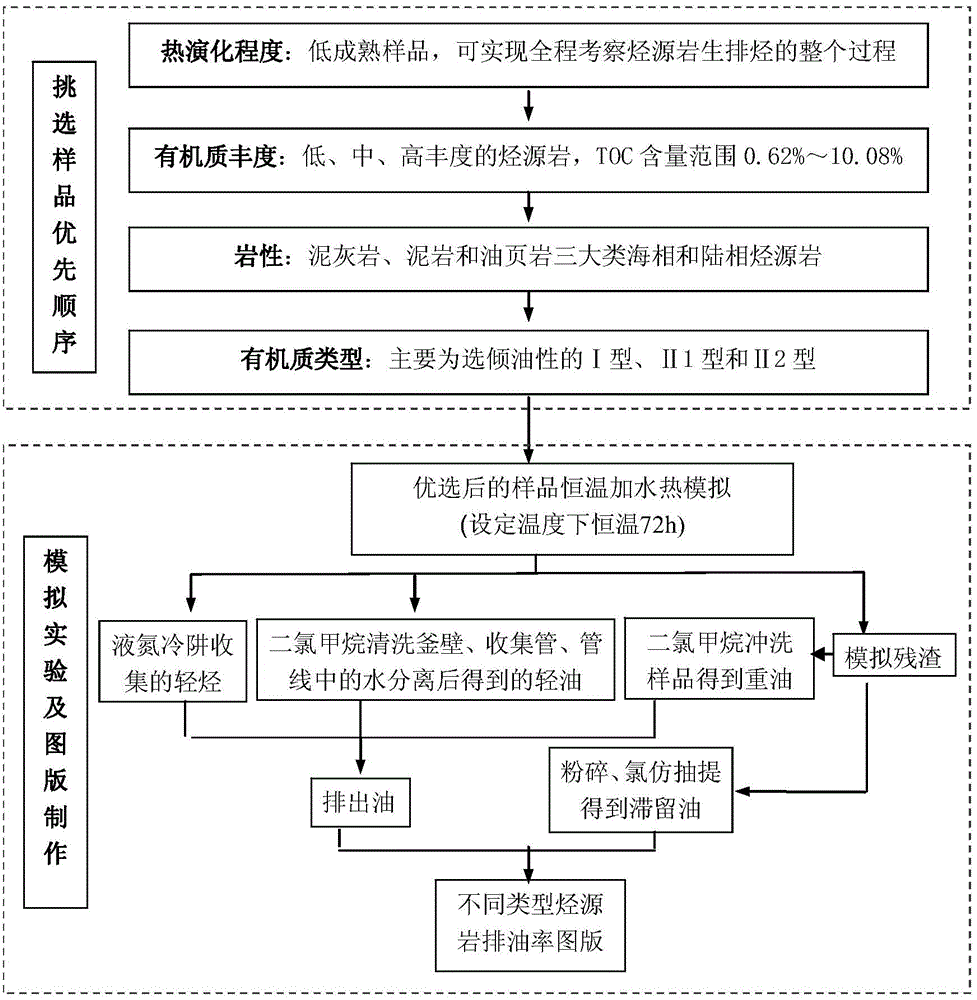Quantitative evaluation method of cracking of disperse liquid hydrocarbon into gas
A quantitative evaluation and liquid hydrocarbon technology, applied in measuring devices, analytical materials, instruments, etc., can solve problems such as unfavorable exploration prospects and limited gas generation potential
- Summary
- Abstract
- Description
- Claims
- Application Information
AI Technical Summary
Problems solved by technology
Method used
Image
Examples
Embodiment 1
[0070] The present embodiment provides a quantitative evaluation method for gas cracking of dispersed liquid hydrocarbons, comprising the following steps:
[0071] Step 1. Select various types of Sinian-Cambrian source rocks in the Sichuan Basin, and based on the study of oil expulsion rate, clarify the distribution of internally dispersed liquid hydrocarbons and externally dispersed liquid hydrocarbons in various source rock types Scales and base quantities such as image 3 shown.
[0072] The Sinian-Cambrian source rocks in the Sichuan Basin include mudstone and marl with different organic matter abundances. According to the analysis of organic matter abundance and type, the thermal evolution of crude oil was simulated using conventional experimental methods and experimental models. image 3 In the corresponding oil discharge rate curve, when the source rock with organic carbon less than 2% is selected, the oil discharge rate in the liquid window stage is 40%-50%; when the so...
Embodiment 2
[0084] This embodiment provides a quantitative evaluation method for gas cracking of dispersed liquid hydrocarbons, such as figure 1 shown, including the following steps:
[0085] Step 1. Select various types of Cambrian-Ordovician source rocks in the Tarim Basin, and based on the study of oil expulsion rate, clarify the distribution of internally dispersed liquid hydrocarbons and externally dispersed liquid hydrocarbons in various source rock types ratio and basic quantity, and obtain the maximum residual liquid hydrocarbon quantity and the discharged liquid hydrocarbon quantity of various source rocks in each period of thermal evolution to gas, such as figure 2 and image 3 shown.
[0086] The Cambrian-Ordovician source rocks in the Tarim Basin include mudstone and marl with different abundances of organic matter. figure 2 The experimental method shown simulates the thermal evolution of crude oil, corresponding to image 3 In the corresponding oil discharge rate curve, ...
PUM
 Login to View More
Login to View More Abstract
Description
Claims
Application Information
 Login to View More
Login to View More - R&D
- Intellectual Property
- Life Sciences
- Materials
- Tech Scout
- Unparalleled Data Quality
- Higher Quality Content
- 60% Fewer Hallucinations
Browse by: Latest US Patents, China's latest patents, Technical Efficacy Thesaurus, Application Domain, Technology Topic, Popular Technical Reports.
© 2025 PatSnap. All rights reserved.Legal|Privacy policy|Modern Slavery Act Transparency Statement|Sitemap|About US| Contact US: help@patsnap.com



